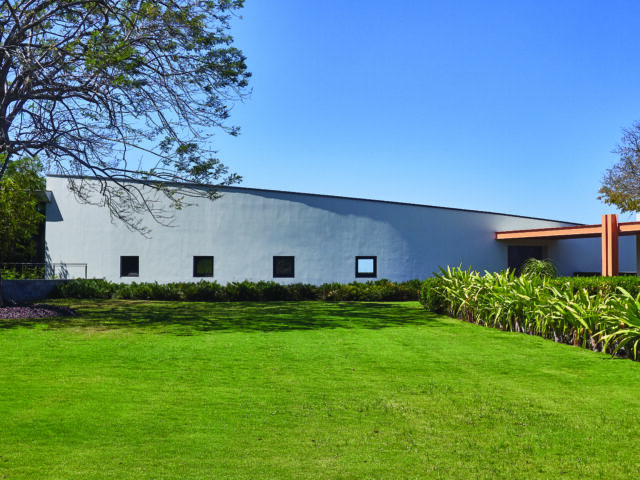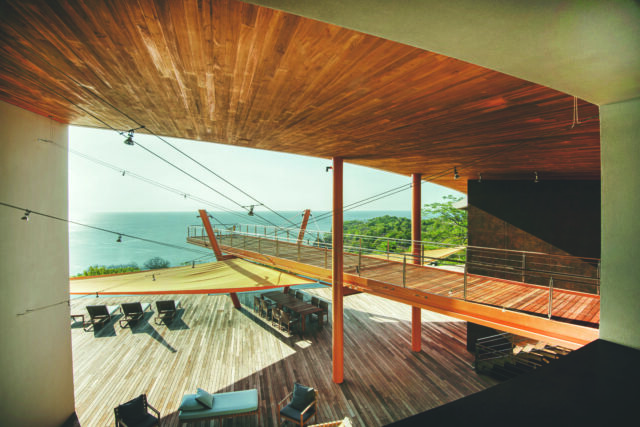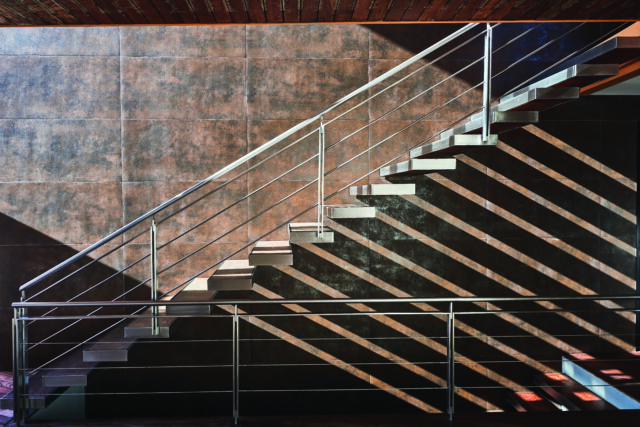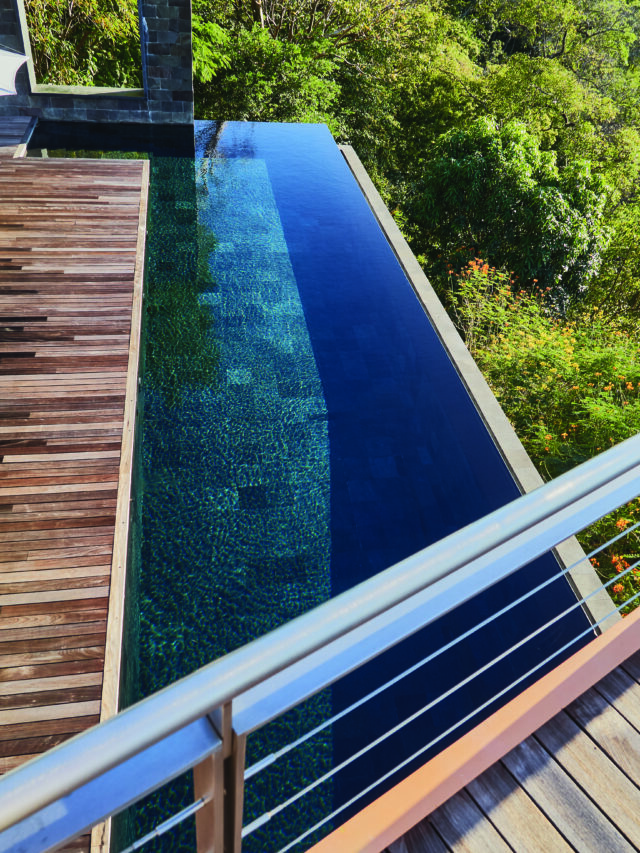
By Jim Servin
An Austrian executive approached Christopher Coy, principal of Barnes Coy Architects (Robert Barnes, the other principal at that time, has been deceased since 2018), asking him to design a dream home on 3 acres of land he had just purchased in Costa Rica. The client had admired a Barnes Coy home in Amagansett, and wanted to replicate one of its features, a dramatic suspension bridge. He desired a similar catwalk-like structure for his new property, located on a 300-foot cliff on the Papagayo Peninsula, facing the Pacific. The request gave the architect pause. “In this house,” says Coy, “the entrance is at the ground level, and the house continues down the face of the cliff, so we didn’t need the bridge.” A core tenet of Barnes Coy’s design philosophy is that site determines structure. Would such a bridge have functional integrity?

“We don’t like to do anything in architecture that’s arbitrary,” says Coy. “But the client said, ‘I want a cool feature. What if that’s where we gather together at the end of the day, watch the sunset and chat?’ Once we drew it, we realized that just below would be the dining table, and the bridge would function as a shade anchor. It was legitimate.”
The bridge, and all other facets of the home, had to meet the specifications of Costa Rica’s environmental review board. “They’re very serious people, scientists and zoning experts,” Coy says. “They worried about the visual and ecological impact of the house. A big point in our design was building a functional architecture and the theme was that it was less intrusive if we put the house several levels down the face of the cliff rather than right at the top of the cliff.”
To prepare the cliffs for building, cranes were employed to make a platform onto which a bulldozer could be lowered. “The crew was brave to drive these things,” says Coy, “because one wrong turn, and they were going to go off the cliff.”
Early in the planning, it was discovered that a linden tree stood at the intended spot of the home’s living room. “The linden tree is very important to Costa Rica’s national identity,” says Coy. “The board would not let us take the tree down, so we had to build around it.” The shape of the home changed: “It gave us a curved wall, which was very cool.”

The structure also had to be seismic-proof, a protection that once put into place was immediately challenged by a 7.6 Richter scale earthquake 60 miles away. “We were in the process of installing a 90-foot saltwater pool when the earthquake struck,” says Coy. “It was so severe, it rippled the whole cliff and tilted the house out toward the ocean. Half the water in the pool dumped over the side. But the pool did not crack; the house did not come apart. The engineer’s work held—quite a test for the house.”

Eight years later, serenity reigns in this exquisite retreat in this crescent shaped house on a hill, as much a work of art as it is a residence. The three-story crescent-shaped structure features a primary bedroom, a pool finished in volcanic stone and social spaces on the middle floor, while above is a modest entrance and below, guest bedrooms, gym, steam room and sauna. During the day, residents gather on the 120-foot-long terrace under the bridge for yoga and personal training sessions by Zoom. (They are sometimes joined by little capuchin monkeys from the surrounding jungle, who observe and then imitate the poses; the monkeys will also visit at breakfast, says Coy, “trying to steal toast.”) “The family’s routine is one of relaxation, regrouping, being centered, meditation, yoga, reading and focusing on mindfulness,” says Coy. “They swim in the pool, they exercise, do a lot of reading, relax all day long…cooks create incredible tropical salads. It’s paradise.”
At night, the family gathers on the cantilevered, 90-foot-long bridge to watch the sun set on the Gulf of Papagayo. “In this part of the world, the sun rises and sets almost exactly at the same point out on the ocean horizon every day of the year,” says Coy. “It’s an opportunity to see the sun’s famous green flash. It’s hard to see, but you can if you focus on it, if you have enough martinis.” barnescoy.com





